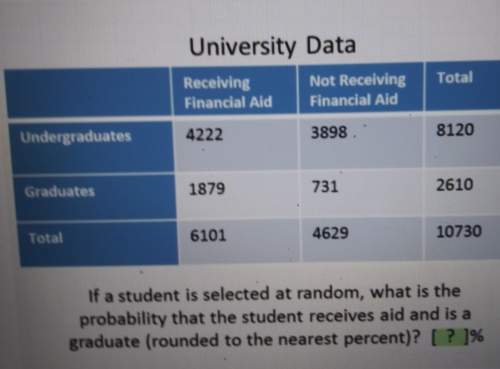
Mathematics, 09.05.2021 07:50, adi47
Now that you have your down payment, the bank agrees to loan you the remaining
difference to purchase a house valued at $300,000. The loan is a 30-year fixed-rate
mortgage with an annual interest rate of 3.24%. To determine how much you should
pay each month to fully pay off the mortgage in 30 years, we use the formula
=
(1+)
(1+)−1
where is the monthly payment, is the amount borrowed, is the total number of
monthly payments, and is the monthly interest rate. Like in part (c), we assume the
annual interest rate is compounded monthly, so =0.0324/12= 0.0027. What will be your
monthly payment on this mortgage? Round to the nearest dollar

Answers: 2
Other questions on the subject: Mathematics

Mathematics, 21.06.2019 15:00, Ruby2480
Abiologist is recording the loss of fish in a pond. he notes the number of fish, f, in the pond on june 1. on july 1 there were 63 fish in the pond, which is 52 fewer fish than were in the pond on june 1. which equation represents this situation? a. f – 52 = 63 b. f – 63 = 52 c. 63 – f = 52 d. f – 63 = –52
Answers: 1

Mathematics, 21.06.2019 20:30, lcy1086526Lisa1026
25) 56(1) = 5b a. identity property of addition b. identity property of multiplication c. commutative property of multiplication d. commutative property of addition
Answers: 1

Mathematics, 21.06.2019 21:30, gonzalezashley152
In a test for esp (extrasensory perception), the experimenter looks at cards that are hidden from the subject. each card contains either a star, a circle, a wave, a cross or a square.(five shapes) as the experimenter looks at each of 20 cards in turn, the subject names the shape on the card. when the esp study described above discovers a subject whose performance appears to be better than guessing, the study continues at greater length. the experimenter looks at many cards bearing one of five shapes (star, square, circle, wave, and cross) in an order determined by random numbers. the subject cannot see the experimenter as he looks at each card in turn, in order to avoid any possible nonverbal clues. the answers of a subject who does not have esp should be independent observations, each with probability 1/5 of success. we record 1000 attempts. which of the following assumptions must be met in order to solve this problem? it's reasonable to assume normality 0.8(1000), 0.2(1000)%30 approximately normal 0.8(1000), 0.2(1000)% 10 approximately normal srs it is reasonable to assume the total number of cards is over 10,000 it is reasonable to assume the total number of cards is over 1000
Answers: 1

Mathematics, 21.06.2019 22:50, kristofwr3444
Use the quadratic function to predict f(x) if x equals 8. f(x) = 25x2 − 28x + 585
Answers: 1
Do you know the correct answer?
Now that you have your down payment, the bank agrees to loan you the remaining
difference to purch...
Questions in other subjects:

Social Studies, 27.09.2019 09:30


Mathematics, 27.09.2019 09:30

Mathematics, 27.09.2019 09:30

Mathematics, 27.09.2019 09:30


Biology, 27.09.2019 09:30


Geography, 27.09.2019 09:30







